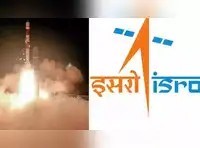ISRO Successfully Conducts Second Short Hot Test
ISRO Successfully Conducts Second Short Hot Test
Why in the News ?
ISRO has successfully completed the second short-duration hot test of its semicryogenic engine at the ISRO Propulsion Complex, Mahendragiri. This test is a crucial milestone toward validating the engine systems before their induction into future launch vehicles.
Successful Semicryogenic Engine Test:
- ISRO conducted a short-duration hot test of the semicryogenic engine on April 24 at Mahendragiri.
- The Engine Power Head Test Article was ignited and operated up to 60% of rated power, confirming stable, controlled performance.
- This is the second milestone, after the first hot test held on March 28.
Importance and Next Steps
- The tests validate critical subsystems: low-pressure and high-pressure turbo pumps, pre-burner, and control systems.
- The data will help finalise operational sequencing for the full semicryogenic engine.
- Further qualification tests are planned to comprehensively validate the engine for future launch vehicles.
Progress on GSLV-F16 and NISAR Mission
- Launch preparations for the NASA-ISRO Synthetic Aperture Radar (NISAR) satellite onboard GSLV-F16 have started at Sriharikota.
- The Second Stage (GS2) of the GSLV was flagged off from Mahendragiri to Sriharikota on March 24.
- Key ISRO leaders, including Chairman V. Narayanan, participated in the flag-off event.
About Power Head Test Article (PHTA):● PHTA validates integrated performance of subsystems like gas generator, turbo pumps, pre-burner, and control systems. ● It marks the first hardware test for semicryogenic engine development. ● Involves hot-firing for less than 4.5 seconds to test start-up. ● Aims to finalise the crucial cryogenic stage for booster propulsion. ● Cryogenics store fuel and oxidiser as liquids at extremely low temperatures. ● A similar test was aborted in July 2023 due to technical issues. Significance of Semicryogenic Engine:● Powers first stage for lifting spacecraft beyond Earth’s atmosphere. ● Higher kerosene density ensures smaller, efficient fuel tanks. ● Planned to replace L110 stage in GSLV Mk III, boosting payload from 4 to 6 tonnes. |




